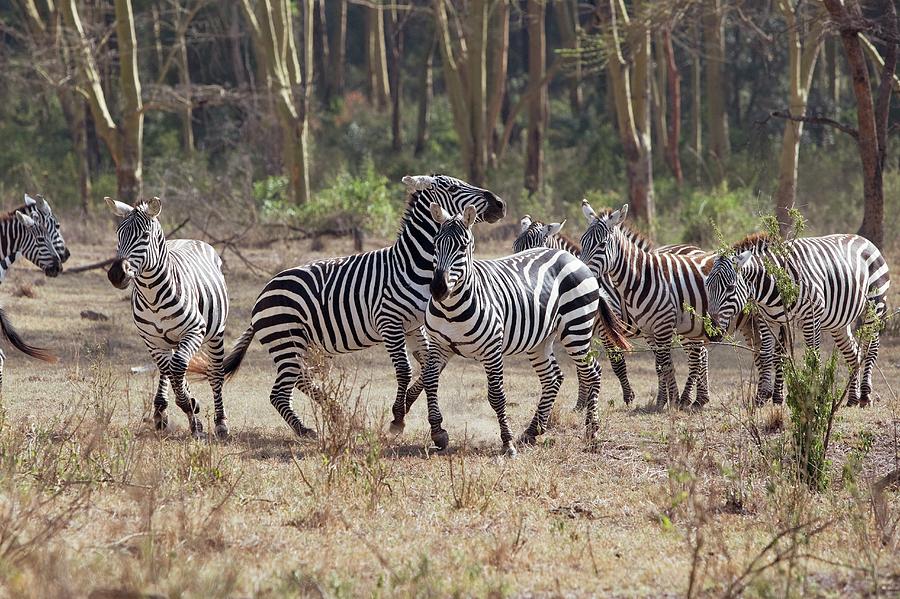
Grouping strategies vary between and within species, ranging from solitary life, fusion-fission systems where group size changes regularly, to stable groups (Clutton-Brock 2016, Ward and Webster 2016). Since dilution and detection effects do not matter behaviorally and demographically in these plains zebras living under high predation risk, these results challenge our understanding of how predation shapes animal sociality: fitness benefits of dilution or detection should not be assumed. However, any benefits of being in larger groups did not translate into increased survival, as we found no effect of group size on the apparent survival of individuals. These results suggest that there are no foraging costs of grouping here, and even some benefits such as a better collective vigilance. Our results show that collective vigilance increases with group size, a prerequisite of the detection effect, but individual vigilance does not consistently decrease with group size, which suggests that there is no group size effect on individual vigilance.


We then fitted multistate capture-mark-recapture and Cox proportional-hazards models to estimate apparent survival of adults and young zebras, respectively, and assess whether a demographic signal of group size could be found. We collected behavioral data (i.e., individual vigilance and foraging, collective vigilance, and agonistic interactions) that we used as proxies to investigate the costs and benefits of grouping in this species. We focused on plains zebra Equus quagga of Hwange National Park in Zimbabwe, a high lion density area. Here, we aimed at empirically testing whether group size influences beneficial and costly behaviors, and ultimately the survival of individuals, in a prey species facing heavy predation pressure.

Therefore, evidence that dilution and detection effects do indeed translate into increased fitness under predation risk remains mostly theoretical. However, very few studies have been able to directly test the relationship between individual fitness and group size in non-cooperative breeding species. This increased safety could be exchanged against a reduced individual vigilance leading to increased foraging and fitness until costs of intra-group competition offset this benefit. Group living is assumed to benefit prey by reducing predation risk due to dilution and detection effects.


 0 kommentar(er)
0 kommentar(er)
